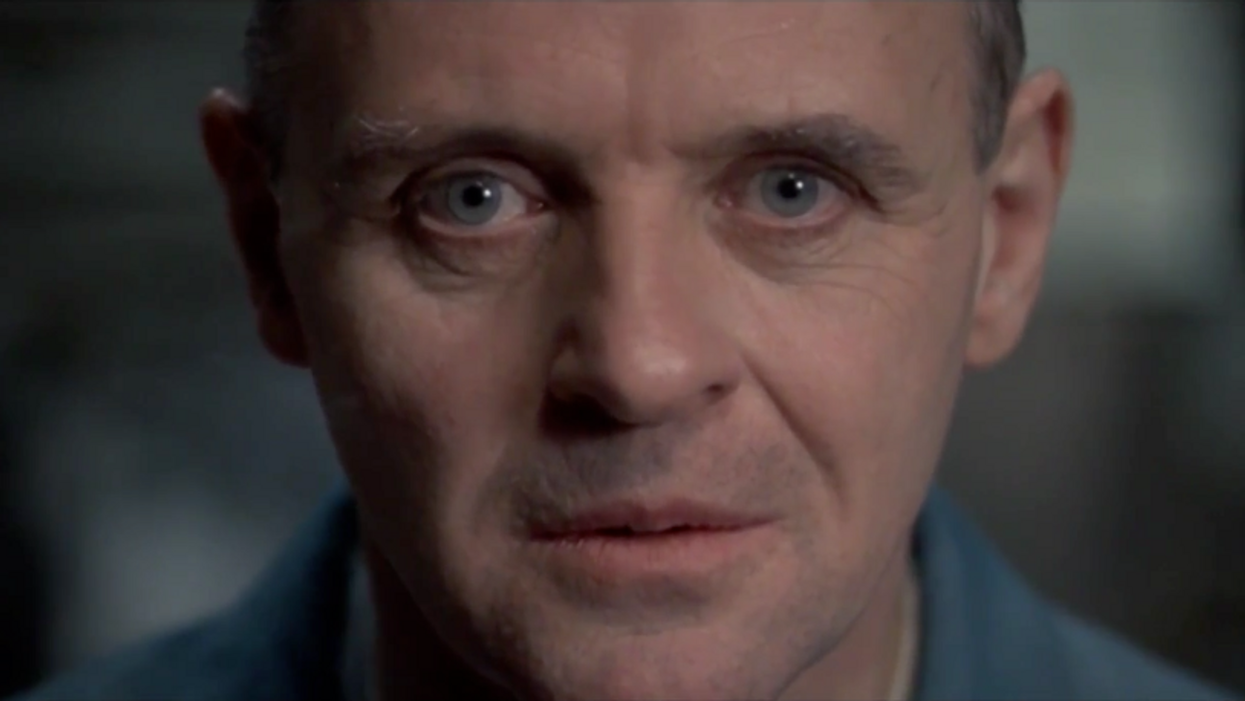A Lesson from Lecter: How to Establish Dominance by Using Eyelines & Framing
How do you portray the drama of a power struggle on-camera without making the scene clunky and expositional? Well, in the case of The Silence of the Lambs, they used eyelines and framing.

This video essay comes from the ever-illuminating Tony Zhou of Every Frame a Painting.
Scenes with drama like this aren't unique to thrillers about green FBI agents and cannibal geniuses. Starling and Lecter size each other up, want something from the other, and do what they can to get it (both dramatically and cinematically) in the same way that
The interesting thing here is how masterfully this tension and struggle is represented using simple methods, like eyelines, framing, and point of view. One of the first things you learn in film school is that shooting a character from a low angle gives them power, while shooting one from a high angle takes it away. So, that's a pretty standard tactic that director Jonathan Demme and cinematographer Tak Fujimoto employed. However, the use of eyeline and perspective is truly amazing, and here's why.
We're not just given a simple two-shot or over-the-shoulder with dialog that explains that, yes, there are two characters in this scene, and yes, they're both trying to establish dominance: a young, inexperienced agent belonging to one of the most powerful government agencies, the FBI, and a brilliant ex-psychiatrist turned cannibal serial killer who has been locked up. No, we're given these strange shots of the characters speaking directly into the camera, like two animals, nose to nose, preparing for a mauling.
Each following shot is so masterfully crafted and edited that what is being said is inconsequential. In fact, you could hit mute and still feel the palpability of the fight for power. A couple examples:
- Starling sitting down vs. Lecter standing: it's like that iconic photo of Muhammad Ali standing over Sonny Liston -- it says dominance.
- Starling in a medium shot vs. Lecter in a close-up: Lecter isn't afraid to get up in Starling's proverbial face, and her distance from the camera communicates fear.
In the end, whether you're planning you're own scene with a wannabe FBI agent and a charismatic serial killer, or if you're planning something more tame, like a marital spat, two roommates moving in together, or whichever scenarios your lovely imaginations have run away with, know that there is so much more that is said than what the dialog suggests. A simple framing decision can mean everything. Being intentional with eyelines can communicate a theme to your audience that would take a series of tedious, expositional scenes full of bloated dialog -- and nobody likes that.
Source: Every Frame a Painting








![Ethos, Pathos, Logos: 20 Effective Ways to Advertise [Infographic]](https://nofilmschool.com/media-library/ethos-pathos-logos-20-effective-ways-to-advertise-infographic.jpg?id=34064614&width=600&height=600&quality=90&coordinates=560%2C0%2C0%2C0)



